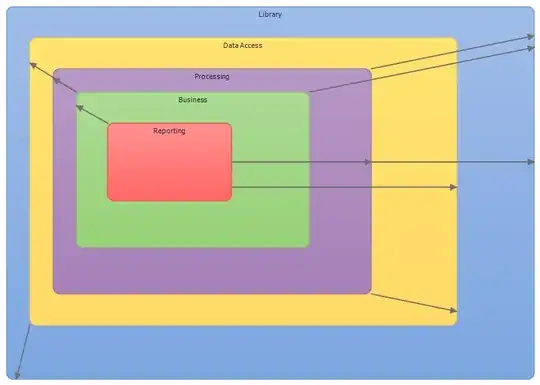Unbeknownst to me while I was building it, I built a "pyramid" architecture. I did not realize this until I laid it out in my new Visual Studio 2013 Layer Diagrammer. Each layer depends on the layer below, and all the other layers below that.
I suspect this is the cause of some of my woes. Each higher layer violates the SRP, because it has more than one reason to change, right? It has multiple contracts with multiple foundational layers. If any of those layers changes, the component has to change.
My question is, how can I refactor this? It's 19,000 lines of code but I can refactor it given enough time as long as I have a solid refactoring strategy.
And as a side note, I also invite your speculation as to why I felt the need to create it like this in the first place. Is this an anti-pattern? Does it have a name?

EDIT
I christen this anti-pattern "The Garlic Architecture"
